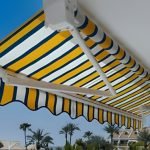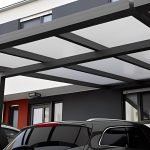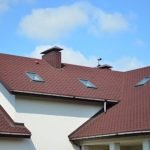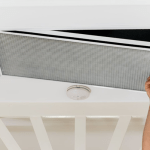A pergola is described as a structure to provide shade or shelter from the weather, you can install screens on the walls or roof of your pergola. Not only it is constructed for shades but with innovation, it is also a part of aesthetics. At the gate, entrances, or on the rooftops it works to provide a classic beauty to the entire structure. Initially, the design started with concrete structures, but later different materials are used for installation.
Together the importance of the extended shades has been observed in various sectors and industries. In historical structures, it was developed for green tunnels, passageways as well as in historical gardens.

It can be very hard for homeowners to choose from the variety of backyard additions that are available for installation. To be clear, every backyard accent exists to give homeowners some shade and privacy. They are different from one another, though, in a variety of ways. This article will explain what a pergola is and the variety of designs available for this new outdoor addition.
Pergolas With Shades
On residential properties, shaded pergolas are quite widespread and make a great alternative to open roof designs. To provide more shade and comfort to their patio, garden, or backyard, many homeowners buy pergolas with covered roofs. For meetings, lunches, and other get-togethers, shaded pergolas can offer the right setting. Pergolas with shade are an excellent option for warm, tropical climates or locations with a lot of rain because they only provide shade and don’t let sunlight or rain inside. Pergolas that provide shade can be dynamic by having either a hard or a soft top. Hard-roofed pergolas are likely to be more advantageous for locals who live in rainy climates, whereas cloth coverings will provide shade and a breeze for locals who live in sunny climates. For a freestanding pergola, a cloth shade can be purchased, although some shaded pergolas already have an attached fabric shade that cannot be removed.
Retractable Pergolas
On the majority of pergola structures, including those made of wood, a retractable covering system can be installed. This creative idea provides sufficient shade and protection when you need it and plenty of sunlight and open air when you don’t with the simple press of a switch (or pull of a cable). In modern types there are light-weighted coverages that are easily retractable. In commercial areas, hotels, swimming pools, and spas, it is mostly found. If you decide to add a soothing hot spa with a privacy screen and retractable sun protection, you must build your patio sanctuary. It is a customized, low-maintenance structure that creates shade using a Shade Tree canopy rather than the customary stringers for complete age.
Arched Pergolas
Arched pergolas are frequently found in neighbourhoods, parks, and commercial places. Although arched pergolas are less typical for residential properties, they can be used to showcase flowers, vines, and other lovely greenery. Arched pergolas may not require a lot of pillar support and can cover the entire width of a sidewalk, bridge, or roadway. Arched pergolas may not have four pillars, in contrast to other varieties. These pergolas occasionally simply have two feet or have walls on either side.
Floating Pergolas
Pergolas, which are most frequently found outside of businesses or commercial entrances, can be an attractive addition to your property. They can be either floating or awning-style. Pergolas that float or awn provide shade while leaving the area underneath perfect for meetings and patio furniture, which is advantageous for residential buildings. In order to make a patio or swimming pool look more appealing, some residential properties place floating or awning pergolas over them. If you choose a floating pergola, the pillars won’t hinder the view, suitable for fewer areas of land requiring better space utility.

Wood Pergolas
The most typical (and affordable) material for pergolas is probably wood. If you were to construct one from scratch, wood would almost certainly be used. Redwood is a better choice, but cedar pergolas are more common because they maximize your investment. Although wood is now less expensive, keep in mind that you’ll need to restrain or repaint it every few years to keep bugs and rot at bay. Over many years, maintenance expenses might pile up.
These are the popularly used pergolas that are constructed and installed as per the utility of aesthetics and spaces.
Conclusion:
Adding a pergola can give shade and shelter, making the outside feel more like an extension of your home. Shadow from the sun and heat is delivered by the cross beams and green leaves or plants or roof, but airflow and natural light can enter. pergolas are a great way to increase your personal space and enjoy the outdoors without being watched.






